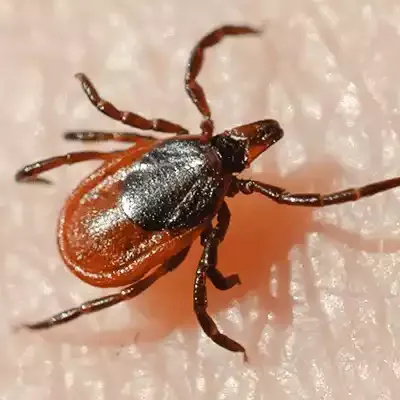
Ticks are biting pests that people and pets regularly encounter in our yards and other outdoor spaces. Keeping them out of your yard is essential to the health of your family. Tick control is best accomplished with the assistance of a local pest control expert. Use this guide to learn about ticks, where they like to live, and how to prevent them. Read on to discover helpful information about ticks and tick control near you.
Ticks are not insects; they are a type of arachnid that feeds on the blood of warm-blooded mammals as their only food source. Like other arachnids, adult ticks have two body sections and eight legs. They lack both wings and antennae. Their small size and ability to camouflage themselves in dense vegetation or within their hosts' fur make them challenging to identify and control.
Ticks are external parasites, meaning that they feed on the blood of their hosts from the outside of the body. Ticks have a four-stage life cycle; at each new life stage, they require a blood meal from a new host. After feeding over a period of several days, they fall from their hosts onto the ground below, where they develop into their new life stage before seeking out a new host.
Common Questions About Ticks
Are ticks a health risk?
Like many other blood-feeding pests, ticks spread disease through their feeding habits. They will acquire a pathogen from one host and infect subsequent victims. Diseases that ticks spread in our region include Rocky Mountain spotted fever and Lyme disease. Tick bites are typically painless but can result in a red, painful area around the bite. Tick bites also create an opening in the skin that can trigger a secondary infection.
What causes a tick infestation?
Ticks can become a problem in any outdoor space because they travel from place to place on the backs of their animal hosts. Mice, squirrels, raccoons, and deer are regularly infested with ticks. As wildlife moves to and from your yard, they introduce ticks to your property. The more attractive your yard is to wildlife, the more likely it is that ticks will find their way to your outdoor space.
Additionally, ticks can get into your yard after you or your pet has spent time in a tick-infested area. When ticks are ready to feed, they will crawl to the top of a piece of vegetation and wait for a host to brush past them. Spending time walking in wooded areas, fields, or next to ponds or lakes can put you in contact with ticks.
Where are ticks commonly found?
You will find that ticks in Connecticut are most active in the spring, summer, and fall. Unfortunately, that is also when people are most active outdoors, putting us in regular contact with these biting pests. The most common places to come into contact with ticks are areas with a lot of shade and tall vegetation, such as wooded areas, fields, and grassy yards.
Some places where ticks regularly gather in our yards include under decks, shrubbery, mulch, leaf piles, grass piles, and fallen trees. Luckily, tick infestations in our homes are not typically a concern. Most species cannot complete their lifecycle indoors, so if you spot a tick in your home, it is likely a stray tick that has fallen off you or a pet.
Effective Strategies for Tick Removal
The easiest, least frustrating way to eliminate ticks from your property is to partner with ProfExt Pest Control. Our locally-owned company is dedicated to protecting our neighbors from the pests that invade your spaces. Through our Home & Yard Pest Defense program, we will treat and eliminate ticks and other outdoor pests. By working together, we can ensure that your outdoor space is once again a place where you feel comfortable and want to spend time. For more information about tick prevention and control, please reach out today.
How to Prevent Ticks in Your Yard
Preventing outdoor pests like ticks can be tricky. In conjunction with partnering with a professional, utilize the following tips to help avoid future tick issues.
- Keep your property's grass cut short.
- Regularly prune bushes and shrubs.
- Cut back overgrown vegetation from the perimeter of your property.
- Eliminate yard debris that provides ticks with a place to hide on your property.
- Deter wildlife activity on your property by keeping lids on trash cans, removing bird feeders, and using fencing.
